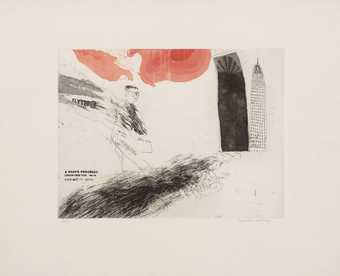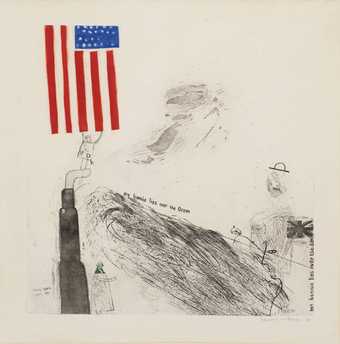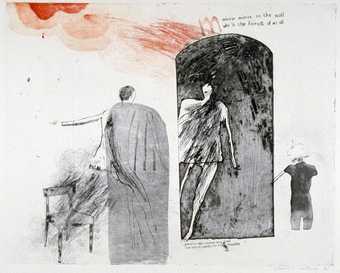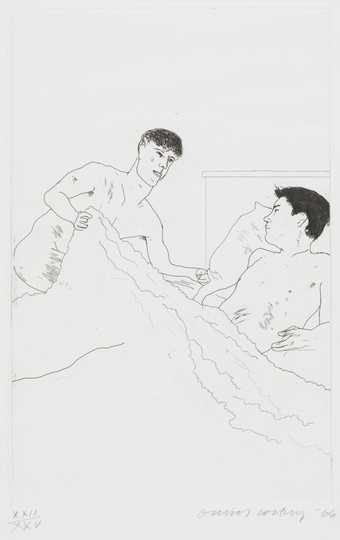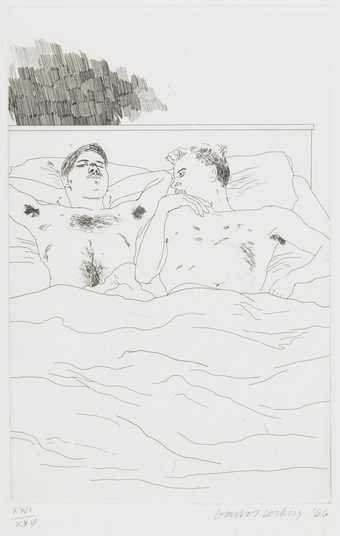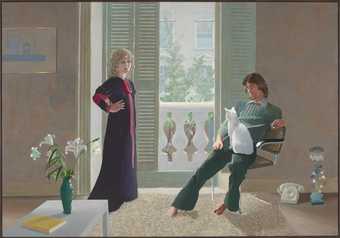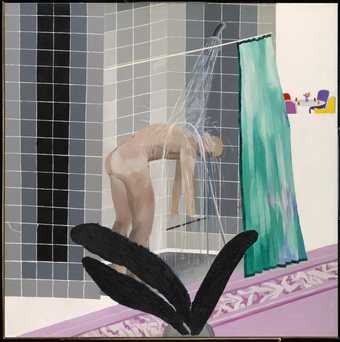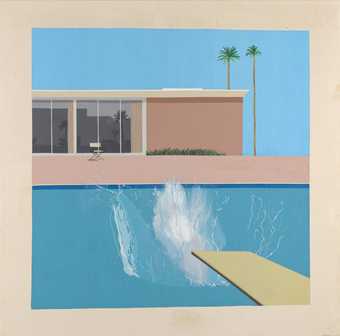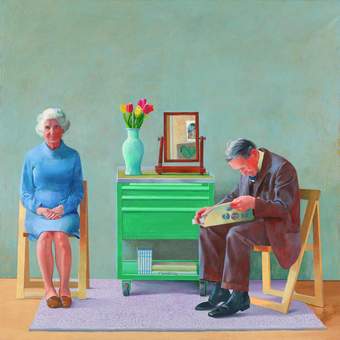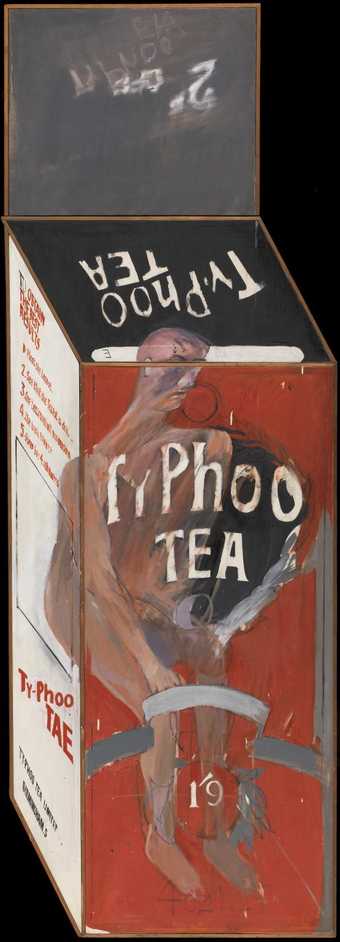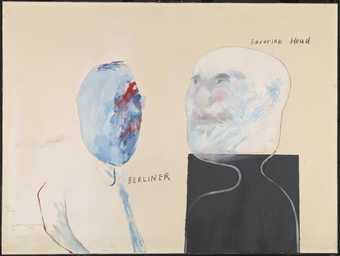
On loan
Museum of Contemporary Art Tokyo (Tokyo, Japan): David Hockney, in collaboration with the Hockney Studio
- Artist
- David Hockney born 1937
- Medium
- Oil paint on hardboard
- Dimensions
- Support: 1187 × 1187 mm
- Collection
- Tate
- Acquisition
- Purchased with assistance from the Art Fund, the Friends of the Tate Gallery, the American Fund for the Tate Gallery and a group of donors 1991
- Reference
- T06468
Summary
Hockney's early works are full of iconographic and stylistic experiment and of autobiographical allusions that often refer obliquely to the artist's homosexuality. In such works, the artist indicates the people he both admired and desired, often using initials or a simple number code in the manner of the American poet Walt Whitman. Hockney based many paintings on Whitman's work. This is the third of four 'Love' paintings which Hockney made in 1960 and 1961, while a student at the Royal College of Art. He numbered them in parody of the contemporary fashion for titling abstract paintings by number only.
The theme of the 'Love' paintings is loving relationships between individuals, real and imaginary. In The Third Love Painting, a dominant pink phallic shape is surrounded by scribbled phrases taken from the lavatory walls of the Earl's Court Underground station - such lines as 'ring me anytime at home' and 'come on david admit it'. The addition of the closing lines from Whitman's 1860 poem 'When I Heard at the Close of the Day' provides a contrast between dignified, sublimated love and illicit couplings. The poem concludes: 'For the one I love most lay sleeping by me under the same cover in the cool night, | In the stillness in the autumn moonbeams his face was inclined toward me, | And his arm lay lightly round my breast - and that night I was happy.'
Stylistically, these paintings show Hockney's interest at the time in the work of Dubuffet, and combine abstract passages and thickly applied paint with figurative images and graffiti-like writing. Hockney intended that the writing would force people to come up close to examine the canvas and read it, like graffiti on a wall.
Further reading:
Nikos Stangos (ed.), David Hockney by David Hockney,
London 1976, pp.12, 44, 62, reproduced p.25 in colour
Terry Riggs
November 1997
Does this text contain inaccurate information or language that you feel we should improve or change? We would like to hear from you.
Display caption
This work is the third of Hockney’s three ‘love paintings’, a series which explores gay love through veiled symbols and coded text. A fleshy pink, phallic shape dominates the composition, surrounded by fragmented written messages. Hockney copied these phrases from graffiti found on a toilet wall at Earl’s Court tube station. The painting also includes the closing lines of a poem by Walt Whitman called When I Heard at the Close of the Day. Whitman’s evocation of sublime love is given a new meaning through its inclusion in Hockney’s work.
Gallery label, August 2021
Does this text contain inaccurate information or language that you feel we should improve or change? We would like to hear from you.
Explore
- abstraction(8,615)
-
- from recognisable sources(3,634)
- non-representational(6,161)
-
- irregular forms(2,007)
- emotions and human qualities(5,345)
- defacement(257)
- gestural(763)
- sexual organs(178)
- sex and relationships(833)
-
- eroticism(409)
- homosexuality(1,673)
- inscriptions(6,664)
You might like
-
David Hockney 1. The Arrival
1961–3 -
David Hockney 7. Disintegration
1961–3 -
David Hockney My Bonnie Lies Over the Ocean
1961–2 -
David Hockney Mirror, Mirror on the Wall
1961 -
David Hockney According to Prescriptions of Ancient Magicians
1966 -
David Hockney In the Dull Village
1966 -
David Hockney In Despair
1966 -
David Hockney Mr and Mrs Clark and Percy
1970–1 -
David Hockney Man in Shower in Beverly Hills
1964 -
David Hockney A Bigger Splash
1967 -
David Hockney My Parents
1977 -
David Hockney Tea Painting in an Illusionistic Style
1961 -
David Hockney Study for Doll Boy
1960 -
David Hockney The Berliner and the Bavarian
1962 -
David Hockney George Lawson and Wayne Sleep
1972–5

